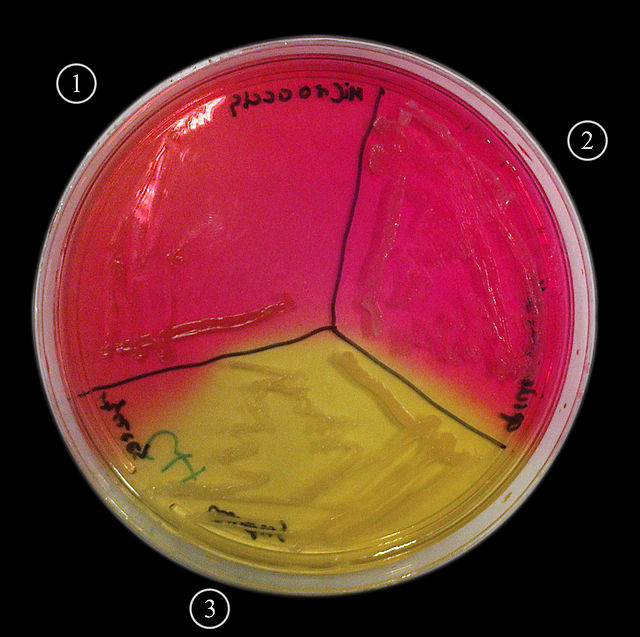Top Qs
Timeline
Chat
Perspective
Mannitol salt agar
Culture medium used in microbiology From Wikipedia, the free encyclopedia
Remove ads
Mannitol salt agar or MSA is a commonly used selective and differential growth medium in microbiology. It encourages the growth of a group of certain bacteria while inhibiting the growth of others.[1] It contains a high concentration (about 7.5–10%) of salt (NaCl) which is inhibitory to most bacteria - making MSA selective against most Gram-negative and selective for some Gram-positive bacteria (Staphylococcus, Enterococcus and Micrococcaceae) that tolerate high salt concentrations.[2] It is also a differential medium for mannitol-fermenting staphylococci, containing the sugar alcohol mannitol and the indicator phenol red, a pH indicator for detecting acid produced by mannitol-fermenting staphylococci.[3] Staphylococcus aureus produces yellow colonies with yellow zones, whereas other coagulase-negative staphylococci produce small pink or red colonies with no colour change to the medium.[4] If an organism can ferment mannitol, an acidic byproduct is formed that causes the phenol red in the agar to turn yellow.[1] It is used for the selective isolation of presumptive pathogenic (pp) Staphylococcus species.[5]

Remove ads
Expected results
- Gram + Staphylococcus: fermenting mannitol: medium turns yellow (e.g. S. aureus)
- Gram + Staphylococcus: not fermenting mannitol, medium does not change color (e.g. S. epidermidis)
- Gram + Streptococcus: inhibited growth
- Gram -: inhibited growth[1]
Typical composition
MSA typically contains:[6]
- 5.0 g/L enzymatic digest of casein
- 5.0 g/L enzymatic digest of animal tissue
- 1.0 g/L beef extract
- 10.0 g/L D-mannitol
- 75.0 g/L sodium chloride
- 0.025 g/L phenol red
- 15.0 g/L agar
- pH 7.4 ± 0.2 at 25 °C
References
Wikiwand - on
Seamless Wikipedia browsing. On steroids.
Remove ads
